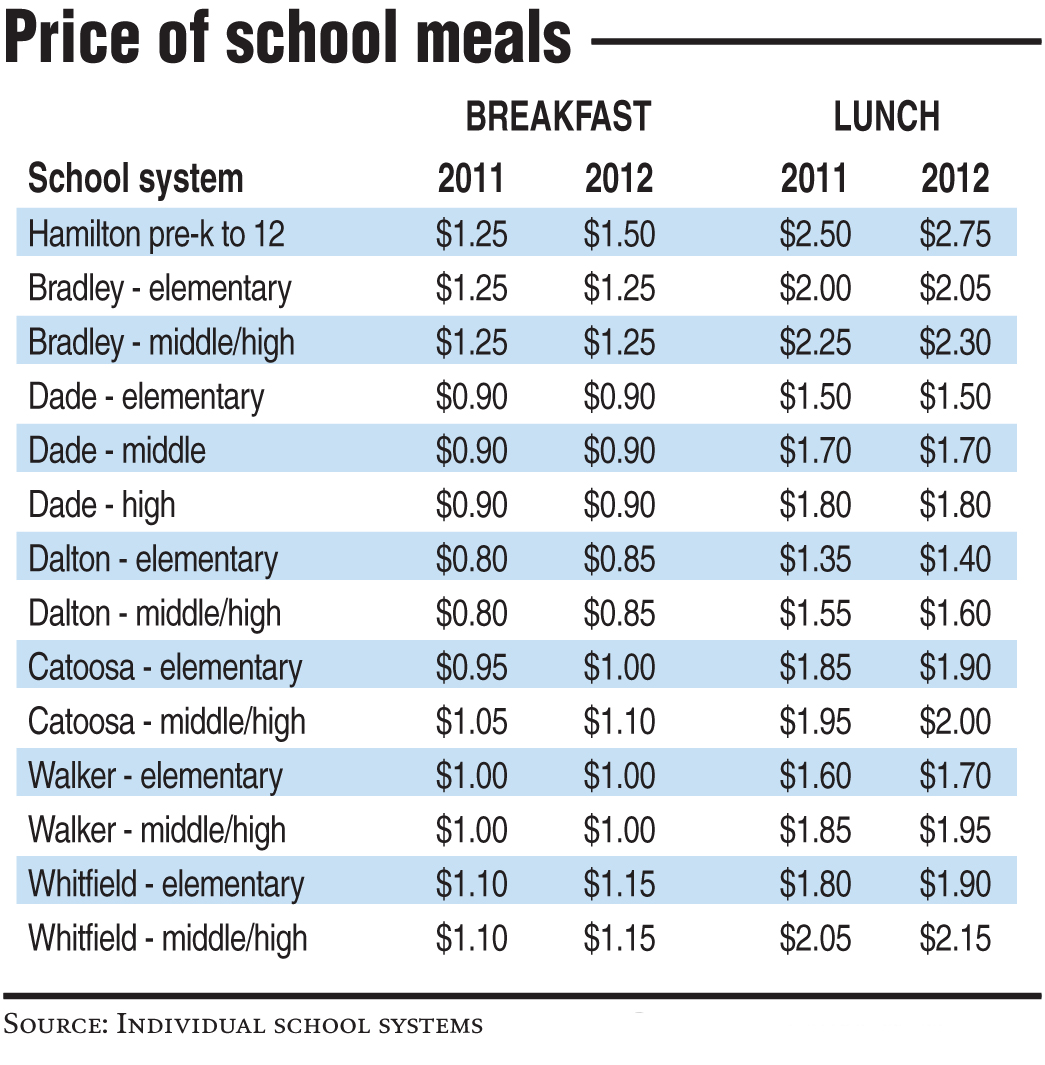Read more.Many will miss first school day of school in Hamilton County
The cost of school lunches will increase in public school systems throughout the region as districts work to incorporate healthier - and more costly - federal meal guidelines.
The price of breakfast and lunch will go up by 25 cents in Hamilton County schools, putting the cost of regular breakfast at $1.50 and regular lunch at $2.75. That could mean an extra $42.50 for students who eat all 170 or so lunches in a school year - or $85 more a year for a student who eats school breakfast and lunch each day.
Many other Southeast Tennessee and North Georgia school districts will see more modest increases of 5 or 10 cents per meal.
Some school nutrition workers say prices must go up to cover the U.S. Department of Agriculture's more rigorous school meal requirements that went into effect in July. Other officials say their districts had already incorporated many of the new requirements, so there was less need to raise prices.
Kristin Eppig, dietitian for Hamilton County Schools, said many items will remain the same on school menus -- chicken nuggets aren't going anywhere. But she said requirements to serve more fruits, vegetables and whole grains will birth some new menu items. And healthier foods don't come cheap.
In a $2.75 lunch, Hamilton County budgets about $1.25 for food costs, with the remainder covering labor, materials and other costs, Eppig said. That means items such as fresh strawberries, currently at 90 cents per half-cup serving, sometimes aren't even an option. Though it can be tough to get the math just right with menu planning, Eppig said the changes to the school nutrition programs are positive.
Previously, schools were required to serve one-half to three-quarters of a cup of combined fruit and vegetables each day. Now schools must serve three-quarters of a cup to one cup of vegetables and one-half to one cup of fruit daily.
Before, whole grains were encouraged. But now at least half of all grains must be whole grain-rich. And by 2014, all grains must be whole grain.
New rules also include specific restrictions on sodium, calories and unhealthy fats.
"All those provisions are increasing costs for school cafeterias," said Diane Pratt-Heavner, spokeswoman for the School Nutrition Association, whose 55,000 members serve 60 percent of the nation's public schools.
Pratt-Heavner said food prices that already were rising now will climb even more because of the severe national drought, which is decimating some crops and threatening to raise the price of meats, fruits and vegetables. Those price hikes will compound the effect on school districts, she said.
Officials in Catoosa County, which already had a variety of fresh produce offerings, said their incremental 5-cent lunch price increase wasn't caused directly by new regulations but by overall rising costs.
In Bradley County, where lunch prices will go up 5 cents, employees are pushing new, healthier menu items by posting photos and descriptions on Facebook and the school system's website. While they'll bring back items such as black beans and lima beans, the menu changes haven't been dramatic.
"Really, it's not that big of a change for us," said Emily Brown, supervisor of child nutrition for Bradley schools. "We always offered fresh fruits and vegetables."
Staff writer Rachel Bunn contributed to this story.

